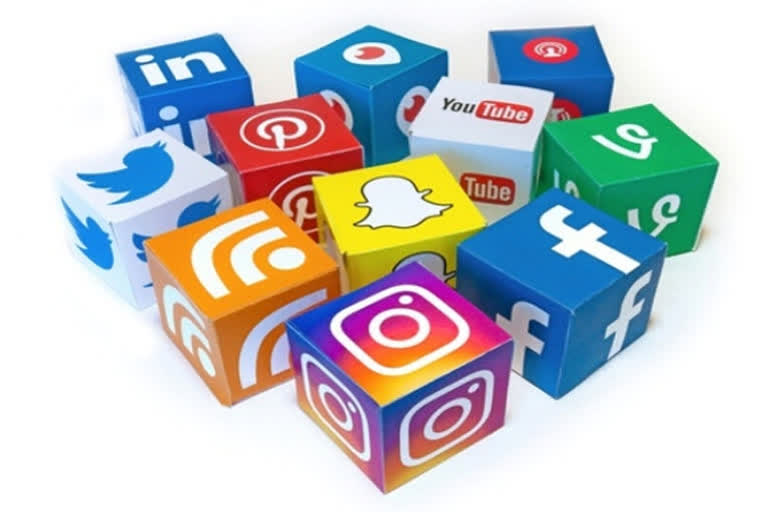Hyderabad: Social media has become an essential communications tool for people today. Social apps like Facebook, Twitter, WhatsApp and many other networking, photo sharing and microblogging sites and applications have become integral to our daily lives.
These sites allow us to create, manage and share messages, images, graphics etc. quickly to vast audiences. Research indicates that social media not just allows us to create and share information, it also allows us to widen online access, increase communication between people, and provide peer and emotional support.
In public health emergencies like the current COVID – 19 outbreak, social media can be a critical tool to reach out to people. While there are many advantages in using social media, it is important to remember that social media can be a double-edged sword.
While it is possible to share positive, authentic information on social media, it is also conducive to share rumours and misinformation just as easily. Therefore, we need to be cautious when we create, like or share information that comes our way via social media. The ups and downs of the last few weeks have really brought out this two-faced nature of social media.
The good information includes text, images, videos and graphics creatively used to reach out to the general public with messages on handwashing, physical distancing and self- quarantine. For example, the World Health Organization, the Ministry of Health and Family Welfare, the Public Health Foundation of India and several NGOs are using social media effectively to show people how to wash hand for 20 seconds (using the happy birthday song) or to show how to maintain physical distancing.
On March 22 not only did millions of Indians clap their support for health workers on the Prime Minister’s call, but they also shared it with millions on social media. The many health workers who are away from home could see the appreciation and support from fellow Indians. People are using social media as a tool for collective action by crowdsourcing food and essentials for health workers and stranded migrant labourers.
Celebrities are sharing videos and messages on abiding by the lockdown in India. Scientists, journalists and health care professionals are discussing government policies, latest news reports as well as providing social and emotional support to their peers. For news channels too, social apps increase their reach and provide additional views from new audiences.
In separate instances, two men from Mumbai and Kolhapur were arrested for spreading fake news about two couples being infected with coronavirus on WhatsApp. In Kolkata, a 29- year-old woman was arrested by Kolkata Police for spreading COVID related misinformation on social media. Self-styled gurus broadcast videos on how drinking gomurta rids us of all viruses.
Rumours and misinformation can be of four types:
1. Uninformed and incorrect information put up by people because they think it is useful. This kind of information is based on their fears and is not evidence-based.
2. Harmful information put up by people that is based on their beliefs.
3. False information to deliberately scare people.
4. Information that becomes outdated or wrong in a fast-developing situation.
Read: How to counter mental health issues during lockdown
Here are a few ways to successfully navigate the social media terrain without falling prey to misinformation. When you see a post on either Facebook or Twitter or even when a message is forwarded to you via WhatsApp be sure to check:
The source: Always check the source of the information to see if it is reliable or whether it comes from unidentifiable sources. Check if the authors are an authority on that subject. Cross-check the information with other reliable sources such as newspapers, television and radio. If you are unsure then it’s best to ask an expert—you can do that on social apps.
The quality of the news material
It is important to check whether the news is based on facts or on opinion. Check if the news is badly presented with grammatical or spelling errors—a sign that not enough thought has been put into it. The material makes sensational claims devoid of any detail or has only insufficient details about the persons involved, time and places of incidents. The tone-of-voice used by the sender tends to be largely persuasive and emotive, emphasizing strong emotions over balanced analysis.
Context matters
Fake news stories generally don’t cite verifiable evidence, reputable websites or relevant information. A good thumb-rule to follow is: extraordinary claims need extraordinary evidence. It helps to check for any references to external and verifiable sources of information, especially for facts and figures. If an article presents original research, do check if the claims and data have been peer-reviewed or is sourced from a pre-print or unpublished papers.
A Google reverse image search can tell you whether an image is fake or genuine. All you have to do is upload a picture onto the Google Image Search site and you will see all the other web pages that have similar images – and if they’ve been used out of context.
Evaluate
Based on the steps mentioned above and all the information you have gathered, you can evaluate if a particular article, email, image or video is credible or suspicious. Always think before you share and inform the sender of the message that the news is false.
The author, Sridivya Mukpalkar is the Editor at Community Eye Health Journal, South Asia



